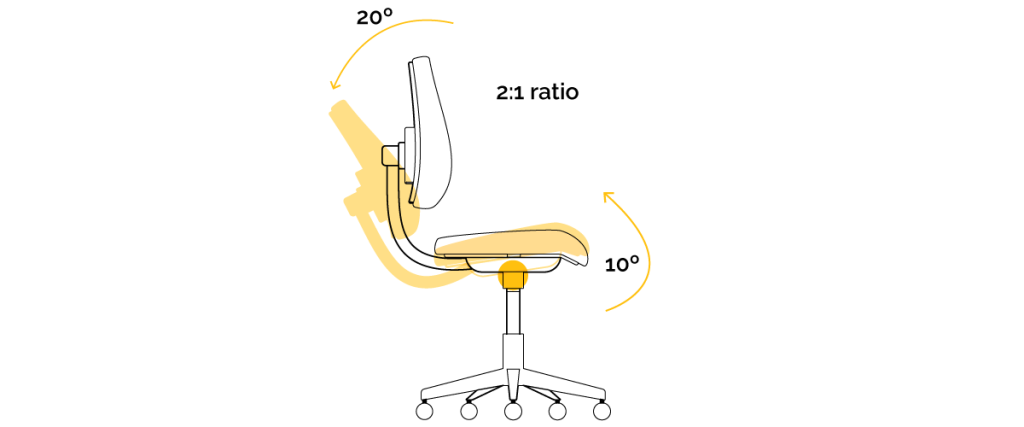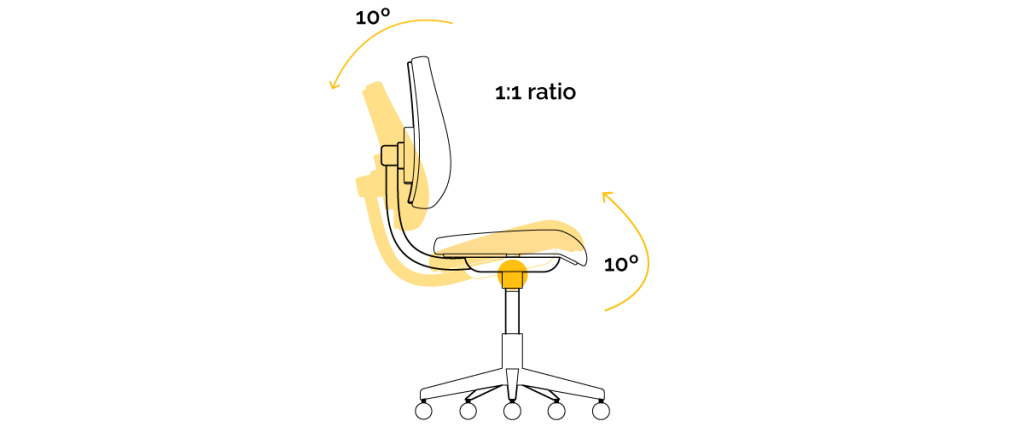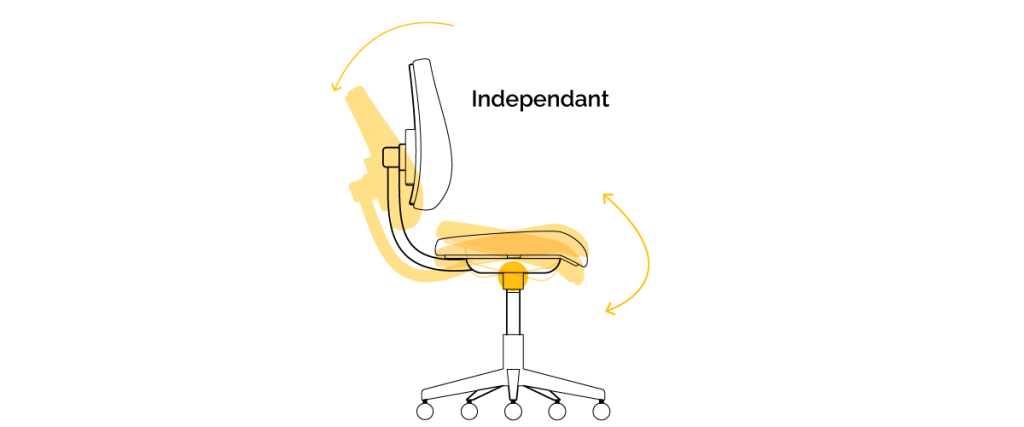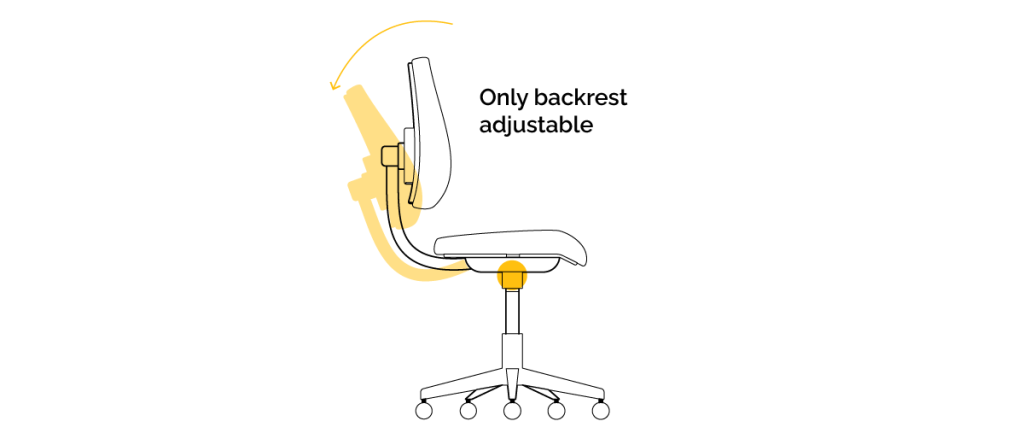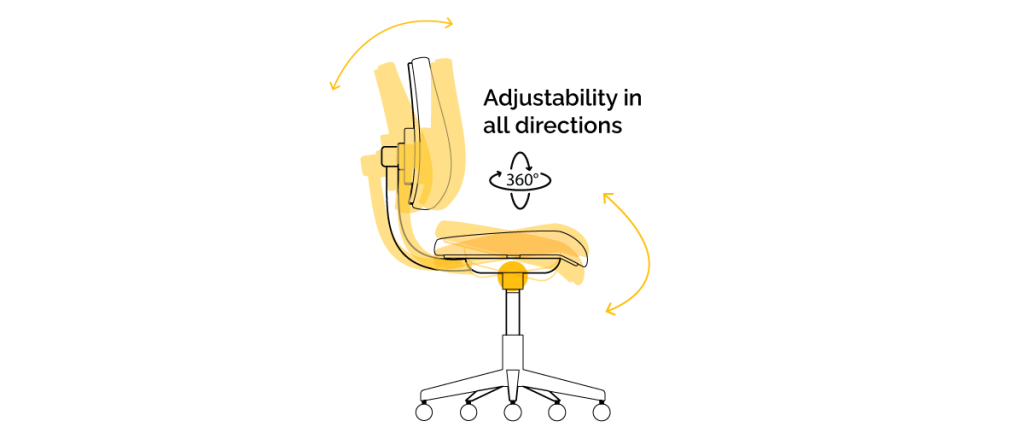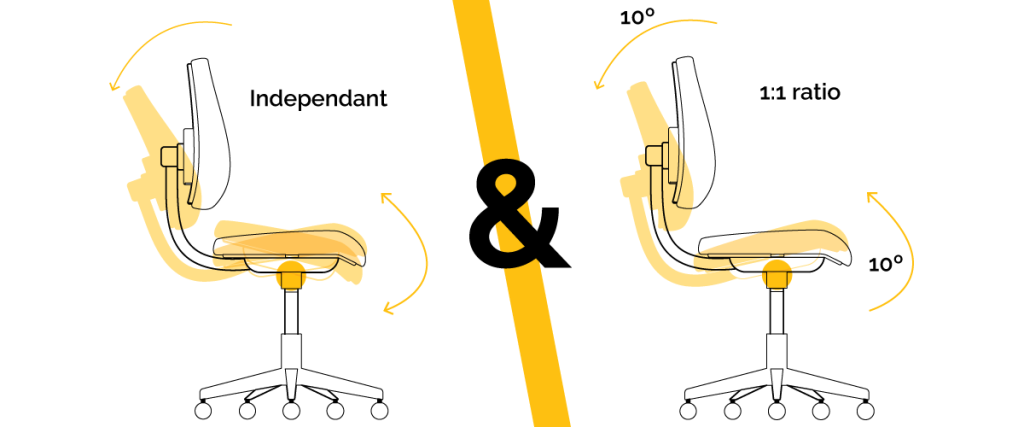Our solutions
Back
Understanding the mechanisms of the chair
When choosing an office chair, it's easy to get stuck in the myriad options available. While the design and aesthetics of a chair are important, it is essential to also consider the mechanism by which the chair is operated. Different mechanisms offer different levels of comfort, support and adjustability, each with its own advantages and disadvantages. In this article, we'll discuss the different mechanisms of office chairs and help you make an informed decision when choosing the right chair for your workplace.
The backrest and seating area of a chair recline in a different ratio (usually 2:1) when you sit back. For example: if the seat tilts 10 degrees back, the backrest tilts back 20 degrees.
What are the benefits?
What are the disadvantages?
What are the benefits?
- Feet stay on the ground
- Your gaze stays ahead
- Stretches the chest without excessive pressure on the thighs
What are the disadvantages?
- Possible risk of loss of lower back support
Mechanism in the middle or at the back of the seat to tilt the seating area and the backrest together, as with a rocking chair (ratio 1: 1). The angle of the front of the seat increases at the same rate as the backrest
What are the benefits?
What are the disadvantages?
What are the benefits?
- Stimulates foot movement for better blood circulation
- Encourages adoption of different postures
What are the disadvantages?
- Pressure on bottom of thighs increases when leaning back.
This is a mechanism in which the backrest and the seat of the chair can be tilted independently of each other.
What are the benefits?
What are the disadvantages?
We currently have no chairs with this mechanism.
What are the benefits?
- Fully adjustable to the needs of the user.
What are the disadvantages?
- Expertise (if not specialist) needed to optimally adjust chair.
We currently have no chairs with this mechanism.
The backrest and seat are disconnected from each other, but only the backrest is movable, the seat remains fixed.
What are the benefits?
What are the disadvantages?
We currently have no chairs with this mechanism.
What are the benefits?
- Back follows backward movement (however, this is minimal)
What are the disadvantages?
- Risk of sliding down from the seat
We currently have no chairs with this mechanism.
This mechanism also offers lateral flexibility so that movements in all directions or in 360° are possible.
What are the benefits?
What are the disadvantages?
What are the benefits?
- The mechanism follows the user in all movements (even laterally).
What are the disadvantages?
- No constant pressure in the lower back.
Then there are also less popular and hybrid mechanisms that do not fall under any of the above categories. For example, the RH Logic 220 is a hybrid of the Single Point Tilt and Asynchronous mechanisms. This is the ultimate office chair in terms of adjustability and can be adjusted separately (Asynchronous) on many parts, such as the backrest, but can also be secured to these parts to achieve, for example, 1:1 tilt (Single Point Tilt).
Choose the right chair
Choosing the right mechanism for an office chair is a crucial part of creating a comfortable and productive workplace. Whether you're looking for a chair with ample adjustment options, superior support or just a sleek and stylish design, there's always a mechanism to suit your needs. By understanding the pros and cons of each mechanism, you can make an informed decision and make sure you invest in a chair that promotes your overall comfort and well-being.
See all our chairs
Need help? We're here for you
Look at our FAQ or contact us
Many customers preceded you
Read about their experience with BakkerElkhuizen
Select your country and language
